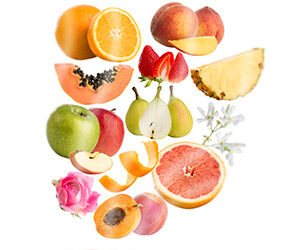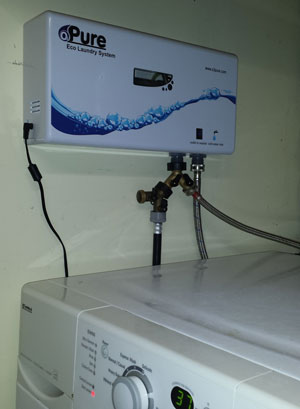
Q
I make wine in five-gallon batches from juice that I buy in Canada. I also buy skins, stems, and small bags of toasted oak chips, then let it all age in five-gallon carboys. I have not been able to notice the oak flavor from these small bags of chips. Can you buy an oak plank, cut it into thin strips, and add that to the carboy to give an increased surface area? Also, what does the toasting add to the oak flavor, and can I do that with a blowtorch?
Glen Anderson
Lyme, New Hampshire
A
As opposed to heading off to your local lumber mill, it would be better if you head on over to your local home winemaking supply house and pick up a bigger bag (or a few bags) of oak chips especially for the purpose of home winemaking.
While you’re right in assuming that some of the oak you can buy at hardware stores is similar to the oak used to make barrels, it is far better to stick to the correct species (Quercus rober or Quercus alba) and the correct wood treatment for winemaking. The deal is this: Once the wood is cut for barrel making (or oak-chip making), it is treated in a very different way than oak used to make, say, a nice cabinet. Lumber that has been treated for building has not been subjected to the same sequence of steaming, aging, and toasting events that barrel wood has. Furthermore, wood preservatives (such as pentachlorophenol) are often sprayed onto cut building lumber, creating a great potential source of stinky TCA (2,4,6-trichloroanisole, see below) in your wine.
So it’s best, and probably easiest, to stick with what’s out there on the market. It just seems like you need to use a few more chips. If you like a more toasty chip than you’ve been using, get some with a higher toast level (probably easier than getting out the blowtorch), and don’t forget to experiment with the amount used and the length of time you leave them in contact with your wine. Just dunking a “tea bag” of chips into a carboy once or twice won’t do it. For pronounced oak character, I like to leave a generous handful of high-toast chips in five-gallon carboys for a couple of days and then taste and smell a sample each consecutive day. I don’t like over-oaked wines, so I take it easy and taste as I go.
Q
I did not rehydrate my yeast before I pitched it. How do I do this and what happens if I don’t?
John Eastwood
Cleveland, Ohio
A
Rehydrating yeast before adding (pitching) it to juice or must is an important step in assuring a healthy fermentation. Adding dry yeast to a high-sugar solution such as grape juice is like giving a presentation to the boss without having first mapped it out — you’re just not prepared. Yeast cells in their dry form are in a “dormant” state and need to be “woken up” before they can be called on to perform their best for you. Rehydrating them is like lubing them up, getting their cellular mechanisms going, and giving the poor guys a chance to get their heads screwed on straight before they can start chewing away at the sugar. To rehydrate yeast, do what I do — follow the package directions. Companies that sell yeast know the best way to activate their product and will usually include directions on how to do so.
If there are no instructions, add about one tablespoon dry yeast to one-half cup water that is at about 100° to 110° F and do not stir. Let sit for 10 minutes and if the yeast looks like it’s gotten bubbly and has started to come to life, stir it directly into the juice or must to be fermented. If after 15 to 20 minutes the yeast have not started to look lively, it is likely that you have a bad batch of yeast and should open another envelope. A five-gram package is sufficient for six gallons (24 L). If you need to stretch a five-gram package to inoculate 12 gallons, dissolve a teaspoonful of sugar in the water, add yeast, cover with foil or plastic wrap, and let the yeast grow for two to three hours in a warm place before pitching.
Q
I was interested in your advice given to a reader on cork taint (Wine Wizard, Summer ’99). You presented an explanation on cork taint that implicated the use of chlorine-based sanitizers during the winemaking process as a source of chlorine for the formation of Trichloroanisole (TCA). Despite the fact that TCA formation is still somewhat unexplained, my understanding is that TCA is formed by the biotransformation of trichorophenol by molds early in the cork treatment process. These chorophenols are thought to be formed by the hypochlorite treatment (chlorine bleaching) of the corks, in addition, some have proposed that certain wood-treatment fungicides also might be a source of chlorophenols.
Given this, I question your advice to home winemakers to eliminate the use of chlorine-based sanitizers in the winemaking process. For the most part, the equipment is well rinsed of remaining chlorine prior to use, although most municipal water supplies also might contain a certain amount of residual chlorine.
Chlorine-based sanitizers (like Sani-Brew, not just bleach) available to home winemakers are probably the most effective and simple way of cleaning and sanitizing equipment (except corks). My concern is that home winemakers will rely solely on the use of sulfite, which is basically a sanitizer and does not effectively clean equipment, thereby increasing the chances of microbial contamination resulting in spoilage of the whole batch, rather than a couple of bottles due to cork taint. Alternatively, you could use TSP followed by a sulfite sanitizing rinse.
Ron Gold
QA/QC Microbiologist
RJ Grape Products Inc
Kitchener, Ontario
A
Congratulations on understanding one of the most frustrating things about the whole TCA/cork taint issue — we still don’t know exactly how it works. This is, in essence, why I tell readers to be judicious in their chlorine use and to not take any untoward chances in needlessly (I emphasize needlessly) exposing their corks and wines to chlorine in the winemaking environment. As you mentioned above, the cork-treating process is thought to be one of the main culprits for the stinky group of compounds that cause “cork taint,” of which 2,4,6-trichloroanisole (TCA) is thought to be the most prominent member.
For those readers who would like to be enlightened about this issue, we’ll start from the beginning. The wood of the cork oak trees contains substantial amounts of phenols (deriving from a breakdown of the lignin in the wood) that serve as precursors to, among other things, chlorophenol, which in turn is a precursor to TCA. During the cork-production process, the cork oak wood can be taken through a chlorine-bleaching process. Under the basic (pH higher than 7) conditions of the hypochlorite bleaching procedure, chlorine reacts with the phenols naturally present in the wood forming a couple of different types of chlorophenols, 2,4,6-trichlorophenol (a direct precursor of TCA) included. Give the 2,4,6-trichlorophenol a chance to be methylated by microbes (molds especially) and the ultra-stinky (detectable at parts per trillion) TCA results.
Processed corks also can acquire chloroanisoles and their precursors during storage or transportation. Studies show that storing corks in containers that have mold and/or chlorophenols/chloroanisoles can lead to a statistically significant amount of TCA being produced, especially when coupled with high heat or humidity. TCA also can arise from pentachlorophenols (PCPs) present in wood preservatives or insecticides. PCPs can undergo microbial dechlorination and a subsequent microbial methylation to result in TCA.
As far as chlorine use in the home winery is concerned, it is wise for us to use caution and common sense because chloroanisoles have been identified in wines even before a cork has been introduced into it during the bottling procedure. When chlorine, chlorinated cleaners, wood preservatives, and the like have been or are being used in wineries, indigenous molds have been shown to produce TCA. Furthermore, wine scientists have found that TCA-contaminated bentonite slurry (from fining of contaminated wines) when in contact with “clean” wines leads to taint.
Add to these two previous scenarios the fact that any chlorine in a wine can come in contact with residual molds naturally present in cork wood (corks can’t be sterilized, no matter how hard producers try and how hard winemakers wish and pray) and create TCA and it makes sense to use one’s head when using chlorine for sanitizing.
Chlorine and chlorine-containing cleaners and sanitizers are wonderful to use in drains, on floors, on surfaces; but they shouldn’t be used to flush out your bottling line or to clean out barrels into which you’re about to empty your reserve Cabernet. The way I think about it is this: Chlorine and chlorine-containing solutions are fine to use if it’s going to either evolve into the air as chlorine gas or if it will be rinsed out with copious amounts of water. Either way it’ll be gone before any wine comes in contact with it, and that’s what we’re going after here.
My first choices for direct wine-contact cleaning and sanitizing will always be something that doesn’t contain chlorine: TSP, soda ash, acids, and sulfites are among the best. Chlorinated products also can be a welcome part of any winery’s sanitization program (and I say sanitization because by definition, wineries will never be able to be sterilized) if used with TCA and its possible production in mind.
You have a winemaking question? Email [email protected].







